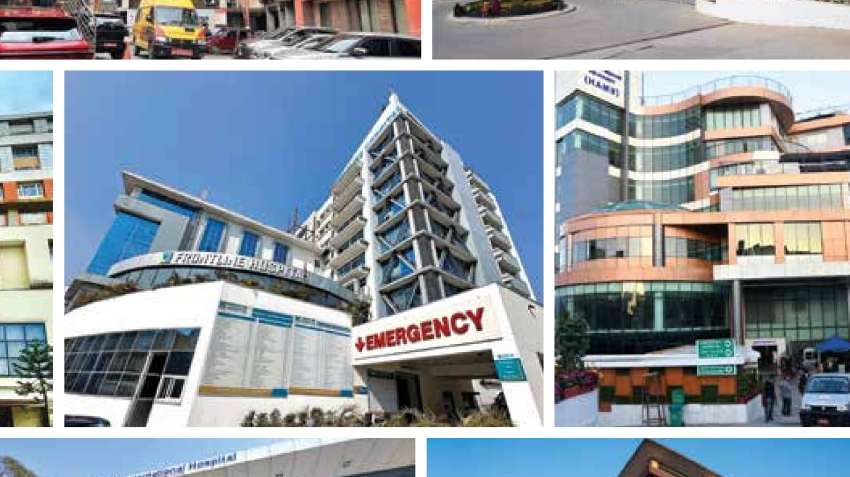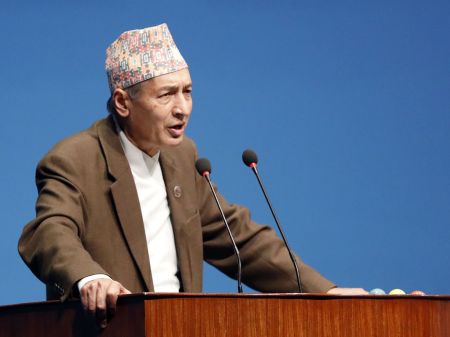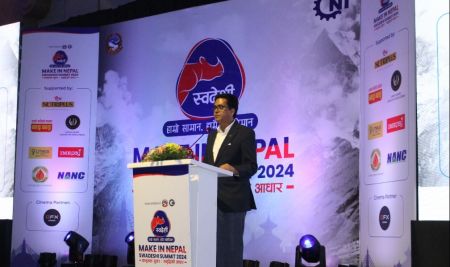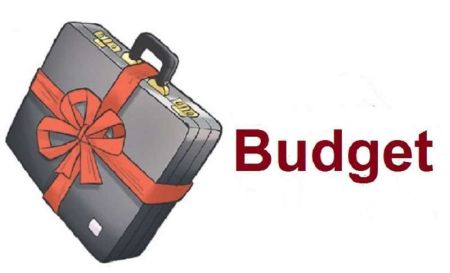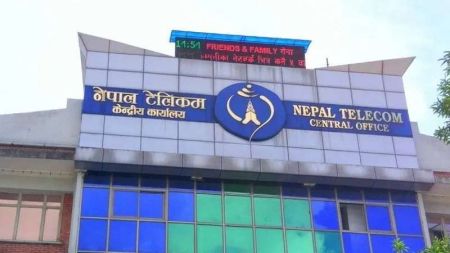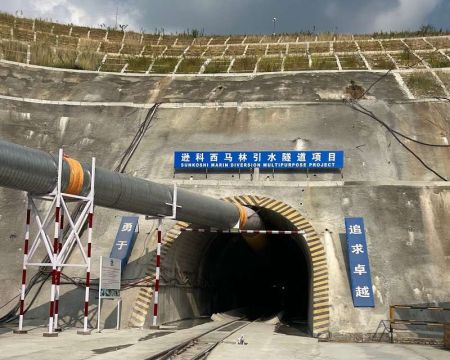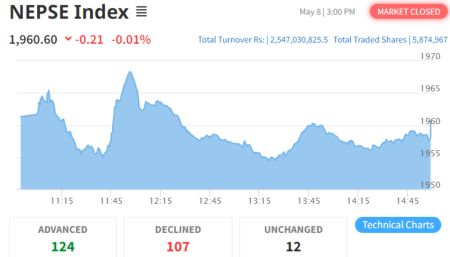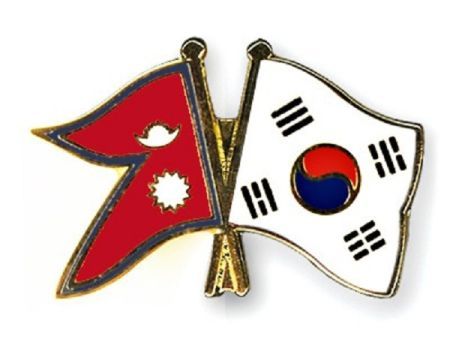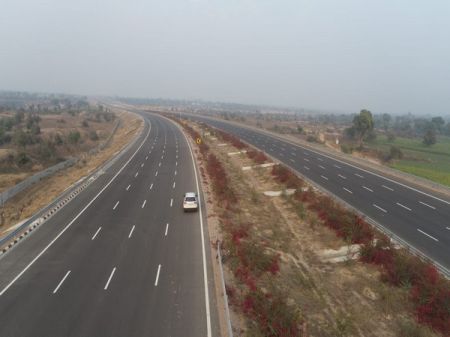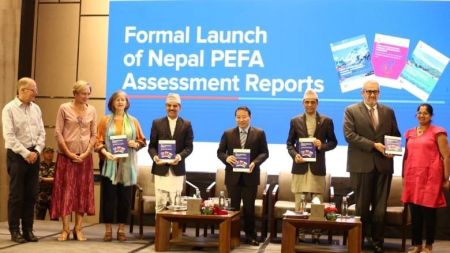Significant private investments have not only fuelled the quantitative expansion of the Nepali healthcare industry but have also enhanced its overall quality. Despite the continuous influx of new investments from the private sector, a notable portion of existing private hospitals is currently grappling with financial challenges.
BY NEWBIZ TEAM
Nepal is set to see three new hospitals with a collective investment exceeding Rs 14 billion in the next three years. Among them is the Kathmandu International Hospital (KIH), a multi-specialty facility located in Tinkune, Kathmandu. Spearheaded by individuals associated with Chitwan Medical College, the KIH is currently under development with an investment of Rs 7.46 billion. Likewise, Dr Bhaktaman Shrestha, the former executive director at BP Koirala Memorial Cancer Hospital, is investing Rs 4 billion in Newton General Hospital in Bharatpur. The proposed facility will have 350 beds. Additionally, Rajendra Raut, the chairman of Shivam Organization, is investing Rs 2.5 billion to build a 200-bed hospital in Budhiganga of Morang. Likewise, Norvic International Hospital, a leading private healthcare facility in Kathmandu, is currently in the process of expanding its infrastructure. The hospital is constructing a new building to increase its capacity to 200 beds. The estimated cost of the expansion project is Rs 2.38 billion.
These new investments bode positively for Nepal's health sector. Despite the prevailing economic downturn, the continued enthusiasm and willingness to invest in the healthcare service industry underscores the robust outlook and confidence of the private sector in this industry.
Healthcare has emerged as one of Nepal's most significant sectors in recent years, contributing substantially to both revenue and employment. The sector encompasses hospitals, medical equipment, clinical trials, outsourcing, telemedicine, medical tourism, and health insurance, among others. The Nepali healthcare industry is experiencing robust growth, driven by enhanced coverage, expanded services, and increased investments from both public and private entities. Factors such as rising income levels, heightened health awareness, a growing prevalence of lifestyle diseases, and improved access to insurance are key contributors to this growth.
Substantial private investments have not only contributed to the quantitative growth of the Nepali healthcare industry but have also elevated its quality. While the public health system remains fundamental to Nepal's healthcare infrastructure, the private sector has played a crucial role in broadening the accessibility of diverse healthcare services and introducing world-class treatment facilities. Presently, there are 22 super-specialty hospitals and 29 health academies and teaching hospitals in the country.
Amidst robust growth in the for-profit health sector, commercial clinics and private hospitals have emerged as vital contributors to the country's healthcare landscape. Several private hospitals are making significant investments in human resources, infrastructure, technology, and emergency transport. Notable examples include Om, Norvic, B&B, HAMS, and Grande International hospitals, all providing multi-specialty treatments delivered by specialised doctors.
According to the Nepal Health Fact Sheet 2023, there was a significant rise in the number of non-government hospitals, including private ones, during the fiscal year 2022/23, with 469 new hospitals added, bringing the total count to 2,551 across the country. There were 2,082 non-government hospitals in the country in 2020/21, according to the Ministry of Health and Population. This number increased slightly to 2,155 in 2021/22. The majority of such non-government hospitals, 1,536 to be precise, are based in Bagmati Province which houses the federal capital Kathmandu.
Leading from the front
The healthcare landscape in Nepal heavily relies on private investment. Stakeholders say that private sector investments in medical education and services surpass that of the government. This underscores the pivotal role played by private entities in driving advancements and ensuring the robustness of the healthcare system in Nepal.
As per Dr Padam Bahadur Khadka, the president of the Association of Private Health Institutions of Nepal (APHIN), 75% percent of health services nationwide is delivered by the private sector. Out of approximately 35,000 hospital beds throughout the country, over 25,000 are in private hospitals. Nepal boasts around 400 private hospitals, with 100 of them concentrated in the Kathmandu Valley alone. Similarly, 16 out of 20 medical colleges across the country are promoted by the private sector, according to Khadka. Furthermore, a striking 90% of undergraduate medical education, encompassing programs like BSc Nursing, BPH, MBBS, etc, is facilitated by the private sector. A significant 90% of the workforce at this level is produced by private medical colleges.
Private investment in the health sector experienced significant expansion in the mid-1990s. During this period, several medical colleges and hospitals were established by the private sector. This growth continued in subsequent years with the emergence of private hospitals not only in Kathmandu but also in other major urban centres across the country.
New Hospitals
- Kathmandu International Hospital Tinkune, Kathmandu. Investment: Rs 7.46 billion
- Newton General Hospital Bharatpur. Investment: Rs 4 billion
- RR Hospital, Budhiganga, Morang Investment: Rs 2.5 billion
High-Quality Medical Professionals and Services
According to Senior Cardiologist Dr Bhagawan Koirala, the human resources produced by Nepal's medical colleges meet the standards set by the World Health Organization (WHO). Although necessary manpower is available in the country, there has been a challenge in utilising it to its full potential, Dr Koirala said, adding that the emerging generation of doctors is opting to work abroad due to inadequate salary offerings in the country.
Dr Chakra Raj Pandey, former director of Grande International Hospital, said that the success of health professionals produced in Nepal in finding opportunities abroad is a testament to their high-quality training. The fact that medical professionals from Nepal have been heading to developed countries and securing favourable opportunities is indicative of the high standard and quality of professionals originating from the country, he added.
"While doctors are present, their distribution is not equitable, resulting in noticeable gaps in healthcare accessibility," said Prof Dr Ashok Kumar Banskota, founder of B&B Hospital.
Nepal's healthcare industry has undergone substantial transformations over the past decade with the introduction of advanced medical technologies and treatment modalities. The private sector has played an important role in bringing modern treatment methods and cutting-edge technologies into the country. Private healthcare facilities have taken the lead in adopting diagnostic tools, technologies, and treatment methods that government hospitals were unable to embrace. For example, while the government is currently preparing to offer PET-Scan services, certain private hospitals in the country implemented this technology three years ago. Private healthcare facilities have been at the forefront of introducing various advanced technologies, setting a precedent for the sector. The services offered by institutions like Nepal Cancer Hospital and Nepal Mediciti Hospital for cancer treatment are still not available in government hospitals.
Doctors point out that the attraction of private hospitals has been established for quite some time, primarily due to advanced technology, convenient health services, and prompt service delivery. Dr Pandey explained that the main factor contributing to this attraction is the faster service provided at a 'reasonable fee'. He highlighted that private hospitals in Nepal offer facilities that are not available in some developed countries. In countries like the USA and Canada, it might take two to three months to consult a specialist doctor, whereas, in Nepal, it is possible to meet specialist doctors on the same day of inquiry, Dr Pandey added. This prompt and efficient healthcare provision further enhances the appeal of private healthcare facilities.
There has also been a remarkable transformation in the sector, particularly in the availability of modern diagnostic and treatment methods, including advanced surgical procedures. This shift is largely credited to the contributions of private-sector hospitals. Notably, the emergence of four international-level private sector hospitals has significantly elevated the standard of healthcare in the country.
RS Bhandari, the chairman of Kathmandu-based HAMS Hospital, affirms that the advancements in the health sector in Nepal have addressed up to 95% of health issues within the country. According to him, the necessity for Nepalis to seek treatment abroad is now limited to only five percent that too for rare diseases and complex health situations. "As much as 95% of illnesses and health issues can be treated within the country. For these issues, there is no need to go out of the country seeking treatment," Bhandari added. He said private-sector hospitals, this way, are retaining billions of rupees within the country that would otherwise have gone out of the country in the name of health treatment.
Medical Tourism Prospects
Doctors emphasise the critical need to ensure the financial stability of private health institutions in the country, stating that it is important if Nepal is to transform into a medical tourism hub. Given Nepal's rich natural and cultural heritage, the nation is strategically positioned to become a medical hub, offering a high-quality and secure environment for medical treatments.
Dr Anil Bikram Karki, the president of the Nepal Medical Association (NMA), said internationally accredited hospitals in the country offer services on par with those in developed nations, utilising advanced equipment for the detection and treatment of various diseases. The presence of a skilled workforce in specialised services further strengthens Nepal's position in the medical tourism landscape, he added. Dr Karki also said Nepal has already made its mark in eye, skin, cancer, and Ayurveda treatments. "There is a rising trend of Indian patients seeking these services in Nepali hospitals along the border areas. These patients choose Nepal due to the cost-effectiveness and reliability of services compared to their country," he added.
NMA Treasurer Shanta Raj Batas said that the number of Indian nationals seeking eye and cancer treatments at Nepali healthcare facilities exceeds the count of Nepalis seeking similar services across the border. People from countries other than India are seeking treatment for eyes, teeth and skin while they are in Nepal, he added.
However, Prof Dr Jagadish Lal Baidya, founder of B&B Hospital said, a substantial economic upturn is imperative for the initiation of medical tourism. "Simplifying rules and regulatory mechanisms are crucial to make Nepal an attractive option for foreign nationals seeking medical treatments," said Dr Baidya.
Dr Karki suggested that the government can reap more benefits by implementing a different fee structure for foreign patients.
Public-Private Partnership
APHIN President Dr Khadka urged the government to collaborate with the private sector stating that it alone cannot promote Nepal as a medical tourism hub. “For comprehensive development in the healthcare sector, the private sector needs to play a significant role, and with the government's facilitation through appropriate policies, our health sector can make significant progress,” he added.
To establish itself as a medical destination, Dr Karki said Nepal needs to efficiently manage and enhance existing infrastructure, structures, and technology. For this, it is necessary to hold discussions between the government, particularly the Ministry of Culture, Tourism and Civil Aviation, and the Ministry of Health and Population along with the private sector, he added. “The positive outcomes from these discussions could promptly materialise the vision of transforming Nepal into a medical tourism destination,” Dr Karki added.
Doctors argue that if the vision of turning Nepal into a medical tourism destination is supported by policies and subsequently implemented, there is potential for Nepali doctors to return from abroad because many moved overseas due to limited opportunities in Nepal. Upon their return, these doctors can contribute further to the improvement of healthcare quality in the country.
Stakeholders say it is crucial to offer essential facilities such as accommodation management, visa processing, and money exchange services when foreigners visit Nepal for medical purposes. Dr Karki suggests that Nepal could charge foreign patients a slightly higher fee, similar to the fee structure for international patients seeking health service in India. “The additional fees collected can be deposited into the state fund,” he added.
Dr Lalan Khatiwada, the executive director of Nepal Skin Hospital, said this approach will not only generate revenue but also create employment opportunities, fostering capital development in the country. “Medical tourists, by utilising various services such as hotels and transportation, will contribute to the broader economic landscape,” Dr Khatiwada added. “Since taxes from the health sector already contribute to the government's treasury, this will offer dual benefits to the government."
Dr Khadka said the primary challenge in realising these goals lies in the current policy landscape. “The private sector has the potential to contribute significantly if the government makes straightforward policy arrangements,” he said, identifying the current insecurity within the country's health sector and the policy hurdles as major hindrances. “Once the healthcare sector achieves transparency, accountability, and safety, healthcare services can ascend to an international standard,” he added.
Commenting on frequent attacks on health professionals and vandalism on hospitals, Dr Khadka said incidents like this do not foster an investment-friendly environment for the private sector. He also asked the government to create an environment that encourages more students to pursue medical education within the country.
Sustainability is still a big issue
With the pandemic-induced revenue growth subsiding, many private hospitals have reported sustained revenue degrowth in the last two fiscal years. The promoters acknowledge that they are currently facing a challenging period marked by a reduction in both revenue and patient numbers.
According to credit rating agency ICRANepal, Star Hospital in Lalitpur, whose annual operating income was Rs 903 million, saw its income plunge to Rs 451 million in 2023. The hospital’s income has decreased by 49.72% in the last two years. HAMS Hospital has also seen its operating income decline to Rs 1.39 billion in 2023 from Rs 1.55 billion in 2022.
These establishments are grappling with the dual challenge of burdensome bank loans with high interest rates, coupled with a decline in business. The compounding factors of the government's health insurance policy, a persistent economic downturn, heightened competition, and the absence of a robust business plan have collectively intensified the financial pressures faced by these private hospitals. Many promoters of private hospitals are reportedly seeking new partners. Few of them have sought the help of their banks to find additional investors. Bankers say the hospital owners are open to selling either their entire stake or a partial share in the business.
The 175-bed Om Hospital, Chabahil, has intensified discussions with potential investors to divest a portion of its stake to enhance the hospital's infrastructure and services for multi-specialty treatment. Sources say owner of one of Nepal's leading retail chain store is among the parties involved in negotiation to acquire a 39% stake in the hospital.
About a dozen private hospitals, including Frontline Hospital, Nidan Hospital, Star Hospital, Nagarik Hospital, Hope International Hospital, and Vayodha Hospital, are reportedly seeking new investors. Sumeru Hospital, Pulchok, initially established to compete with Patan Hospital, is undergoing the sale process. Sumeru Hospital, Pulchok, initially established to compete with Patan Hospital, is undergoing the sale process. While the hospital operates in two locations, Dhapakhel and Pulchowk, it has to compete with Alka Hospital and Nidan Hospital in Pulchowk.
The newly established Frontline Hospital, Old Baneshwar, has witnessed a significant drop in patient numbers - from 200 to 50 individuals in the outpatient department. This decline is not exclusive to newer establishments. Even the well-established private hospitals are seeing a slump in patient numbers, signalling a common challenge for hospitals established without conducting comprehensive feasibility studies.
Government hospitals, which are offering general health check-ups and advanced disease treatments at far lower fees, are presenting formidable competition to these establishments. The government's health insurance scheme, applicable only to government and community hospitals, is one of the reasons that have diverted patients from private healthcare providers. "Private hospitals are in an intense competition to sustain their business. The gradual decline in the number of individuals able to afford treatment costs further exacerbates the situation for them,” Kishor Maharjan of Star Hospital said. “Consequently, there has been a decline in the number of people seeking health services from private hospitals."
Under financial strain, private hospitals are now looking to go public to raise capital. HAMS Hospital, for example, has already applied to the Securities Board of Nepal (Sebon) for its initial public offering (IPO). It applied to the stock market regulator on December 22 to issue 1,125,000 units of shares at a premium rate of Rs 228 per unit. It has appointed Muktinath Capital Limited as theissue manager, while the underwriting of the shares will be done by Nepal SBI Merchant Banking Limited.


